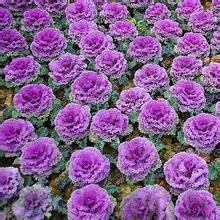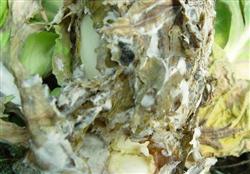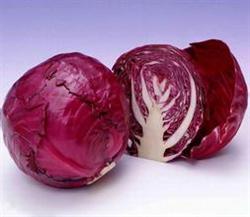Cultivation techniques of Spring Purple Cabbage

Purple cabbage is a variety of cabbage, purple leaf ball for the product, native to the Mediterranean Sea to the North Sea coast of Europe, like cool and cold, open and protected areas can be cultivated. It has the characteristics of compact ball, bright color, strong adaptability, high yield and good quality. Spring purple cabbage can be sown from middle December to middle March of next year and harvested from early June to early July in Nanjing area. The yield of 667 square meters is 2500~3000kg and the income is 4000~4800 yuan. The cultivation techniques of spring purple cabbage are introduced as follows. 1. Variety selection Select varieties with strong winter character, spring sowing type, early maturity and high yield. At present, the varieties cultivated in spring cabbage in China include Zigan No. 1, Zaohong, Hongmu, etc. According to the cultivation technology research of our institute, Zigan No. 1 has strong winter character, early maturity, good quality and high yield, which is suitable for early maturity cultivation in Nanjing area. 2. Sowing at right time and cultivating strong seedlings. The middle of December is the suitable sowing time in Nanjing area, and the seedlings are protected from early bolting. Seedling broadcast method, 667 square meters with seed quantity of 50g, seedbed area of 16 square meters, after sowing irrigation through water, covered with plastic film, improve bed temperature, promote germination. Spring purple cabbage seedling period is short, need to keep higher temperature, pay attention to ventilation in the early stage, keep 15~20℃, cold at night, keep the temperature about 5℃, control the vernalization process, low temperature exercise before planting, try to reduce the temperature without freezing injury, in order to adapt to the early spring open field environment. Fertilize the nursery bed, 667 square meters with urea 20kg, compound fertilizer 40kg, shallow ploughing twice after application, fully mixed with soil, stamped flat with pedal after sowing, then sprayed with water to cover the film, seedling emergence after a week, remove the film, thinning seedlings once when the seedling breaks the heart and 2 true leaves, the seedling spacing is about 6cm, pay attention to thinning seedlings, keep sparse between them, keep strong between weak ones, water and topdressing according to weather conditions after thinning seedlings, and promote strong growth of seedlings. 3. Select sunny, dry and well-drained plots and fertile soil rich in organic matter for planting, with good water retention and pH value of 5.8~6.9. 5000kg decomposed manure and 100kg compound fertilizer were applied as base fertilizer for 667 square meters, ploughed once after fertilization, and then raked and broken soil was raked to make deep and high ridges with a width of 2m. The planting row spacing was 40cm square, and 3500 plants were planted every 667 square meters. When the seedlings are 15cm high and have 6~7 true leaves, they should be planted in the greenhouse on February 28. After planting, they should be watered immediately and rewatered in time to ensure the survival of the trees. 4 Field management After planting spring cabbage, due to the low temperature, in addition to watering the seedlings, generally do not irrigate more. 7~10 days after planting, 25~27℃ in the day and 13~15℃ in the night, intertillage twice to keep soil moisture and higher soil temperature, promote root development, seedling stage, rosette stage soil dry and wet degrees. At the later stage of rosette stage, in order to control excessive growth of stems and leaves and promote differentiation of bulbs and leaves, early maturity varieties should squat properly, not too long, early bolting can be controlled, and entering the bulb setting stage, in order to promote rapid growth of leaf bulbs, soil moisture should be kept frequently, and combined with watering, additional topdressing should be applied, 15kg urea and 10kg calcium and potassium fertilizer should be applied to 667 square meters, or 0.2% potassium dihydrogen phosphate should be sprayed to leaf bulbs, once every 7~10 days, and continuously sprayed twice. The growth of purple cabbage can be regulated by spraying 6mg/L ABT, 2000 times solution of high yield element and 5000 times solution of spray treasure on the leaves of plants. Early maturity varieties have short heading period, fast weight gain of bulb leaves in early stage, early topdressing, no topdressing in middle heading stage. 5. Control of diseases and insect pests. It is easy to produce soft rot in the ball setting stage. If diseased plants are found, they should be pulled out in time. At the initial stage of disease, 72% agricultural streptomycin sulfate soluble powder should be sprayed with 3500 times solution, once every 7~10 days, and continuously sprayed for 3 times. To control cabbage worm, 667 square meters can be sprayed with 5% cypermethrin EC 40g and water 60kg to control Plutella xylostella, 667 square meters with 0.5% abamectin WP 60g and water 60kg to control aphids, 667 square meters with 10% imidacloprid WP 15g and water 60kg. 6 Timely harvest in early June harvest, leaf ball compact should be timely harvest in batches, harvest within 1 month, otherwise leaf ball easy to crack or rot. The yield per 667 square meters is about 2700kg.
- Prev

How to treat cauliflower blight in cabbage
There are many low temperature and rainy weather this spring, cabbage is prone to Sclerotinia sclerotiorum, pay attention to early investigation and treatment. Sclerotinia sclerotiorum occurred in cabbage seedling stage, water-immersed light brown spot appeared on the leaves, the edge was not obvious, and the soft rot of the diseased tissue caused quenching. During the pericardial period, water-stained depressions occurred in the leaves and root neck near the ground, and began to show.
- Next

Control techniques of Diseases and insect pests of Purple Cabbage planted in Spring
As long as pest control is properly managed, purple cabbage generally has few diseases, so it is easy to produce pollution-free raw food products. Purple cabbage may have seedling diseases such as quenching disease and downy mildew only when the humidity is high at seedling stage, which can be controlled by Yunsheng, Dasheng, carbendazim, Xinluling, Anke pesticide and so on. Worms.
Related
- Where is it suitable to grow horseradish in China? it is expected to see the middle altitude horseradish in Alishan.
- How to prevent tomato virus disease reasonably? (Control methods included)
- Many people like to plant towel gourd on the balcony. What are the main points of this method and management?
- What crops can chili peppers be mixed with?
- Fertilization techniques and matters needing attention in Tomato
- What are the grafting techniques for peach seedlings in spring?
- Harm and control methods of root swelling disease of Chinese cabbage
- What are the pests of sweet potatoes? How to prevent and cure it?
- Symptoms, causes and Control methods of navel Rot in Tomato
- The cause of "Cucumber rotten bibcock" in Farmers' planting Cucumber and its Control Plan

